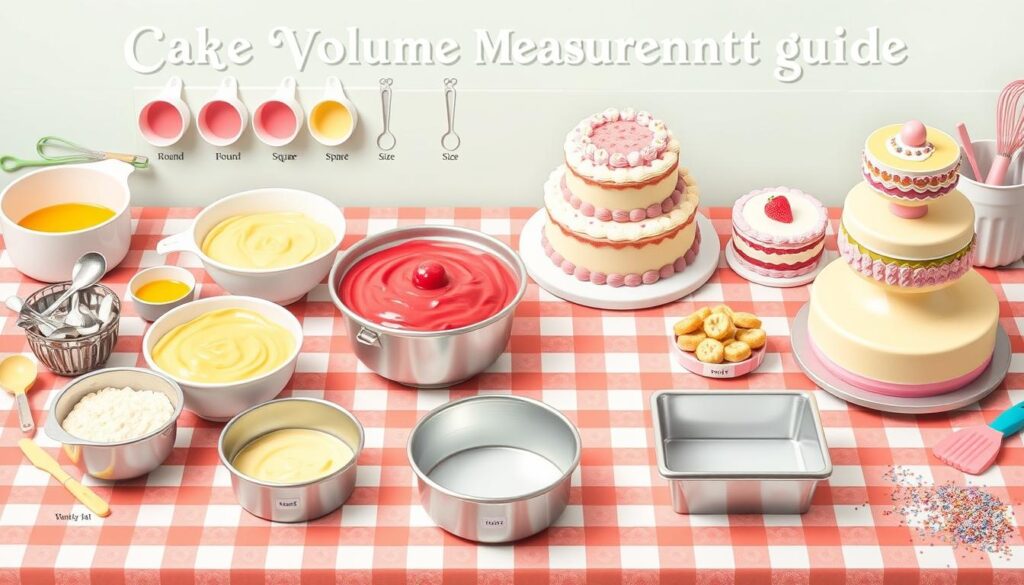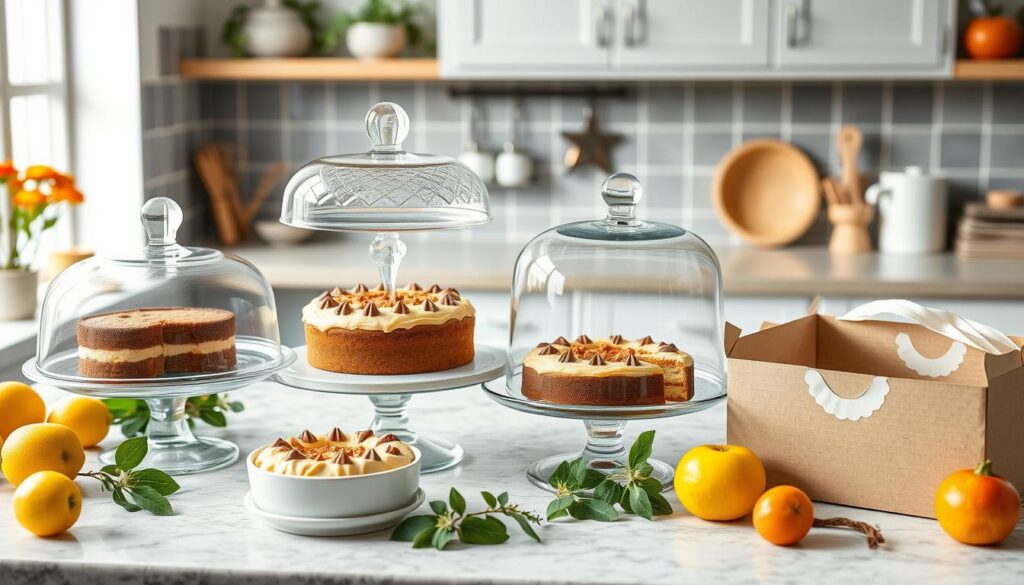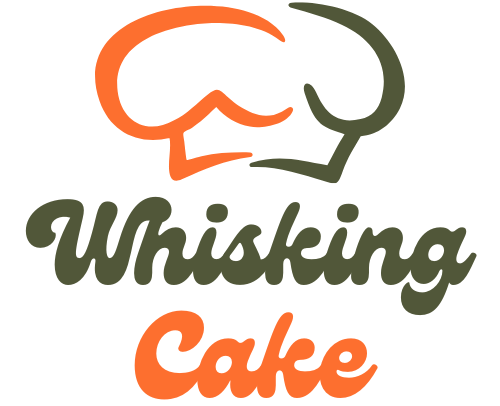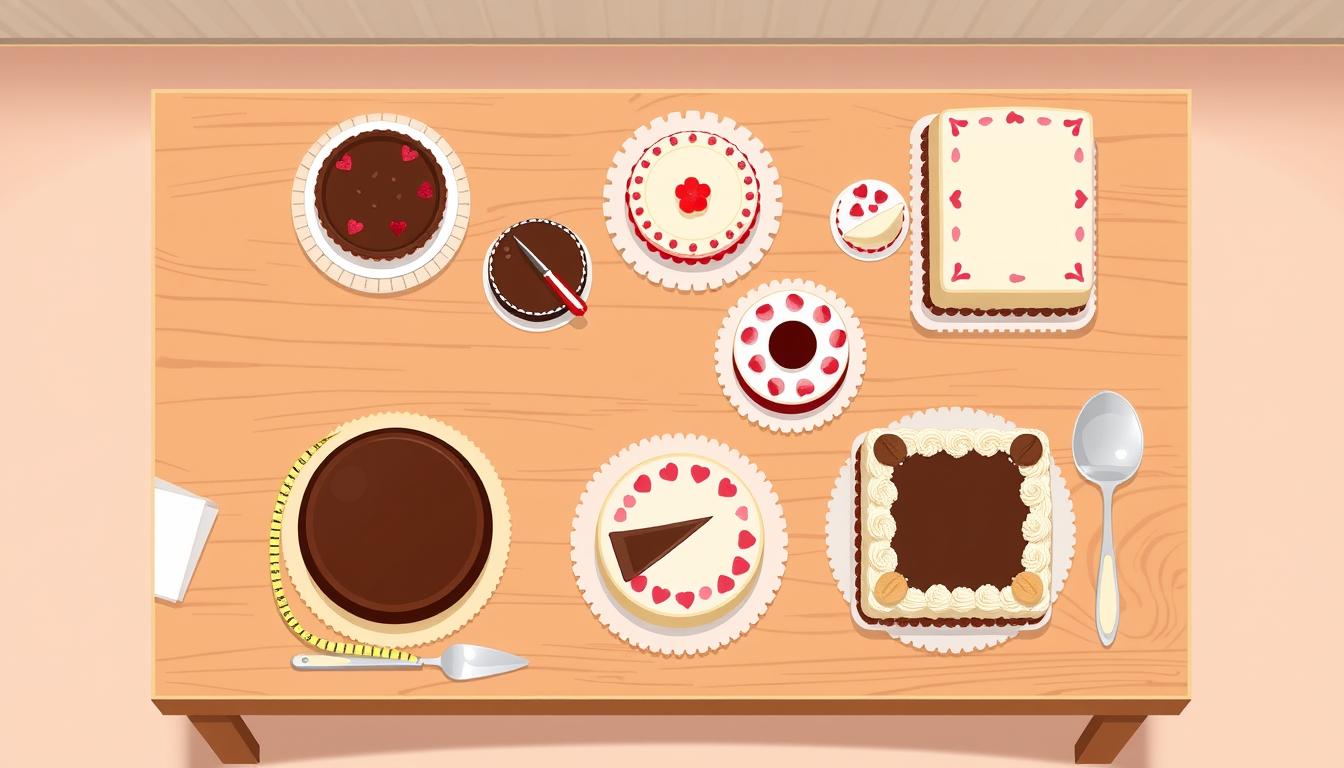Planning the perfect cake for your event can be tough. It’s key to know about cake sizes and servings to make sure everyone gets a tasty slice. Whether it’s a small get-together or a big bash, picking the right cake size is crucial.
Sheet cakes come in three standard sizes for different events. The quarter sheet (9×13 inches) is great for small family parties. Half sheet (13×17 inches) is perfect for medium-sized gatherings. And full sheet cakes (16×24 inches) are best for big events with lots of guests.
Understanding your cake serving options is important. Most sheet cakes have two layers with filling and frosting. But, you can also find single-layer cakes for smaller events. The size of your cake affects how many people you can serve.
Table of Contents
Essential Guide to Cake Sizes
Knowing the right cake size is key for any celebration. Whether it’s a birthday, wedding, or special event, the perfect cake size makes all the difference.
Cake sizes vary a lot. They depend on the cake type and how many guests you’re serving. The diameter, circumference, and dimensions of your cake are important.
Standard Sheet Cake Configurations
Sheet cakes come in three main sizes. Each size is perfect for different numbers of guests:
- Quarter sheet cake: Typically 13″ x 9″
- Half sheet cake: Usually 18″ x 13″
- Full sheet cake: Measuring around 18″ x 26″
Round and Square Cake Measurements
Round and square cakes are great for various events. Here are the standard sizes:
| Cake Type | Diameter/Width | Typical Servings |
|---|---|---|
| 8″ Round/Square | 8 inches | 8-12 servings |
| 9″ Round/Square | 9 inches | 14-18 servings |
| 10″ Round/Square | 10 inches | 18-24 servings |
| 12″ Round/Square | 12 inches | 22-30 servings |
Height and Layer Considerations
The height of your cake is crucial. Standard three-layer cakes are about 4.7 inches tall. Four-layer cakes can be up to 6 inches tall.
« The right cake size transforms a good celebration into an unforgettable event. » – Professional Baker’s Wisdom
When picking a cake, think about the number of layers, diameter, and how many guests you’ll have. This ensures you have the perfect dessert for your event.
Understanding Portion Control and Servings
Mastering cake portions is key for any event. Knowing how to divide cake slices can greatly improve guest happiness. A standard slice is usually 2×2 to 2×3 inches, giving everyone a tasty treat.
« Precision in cake slicing is an art that transforms a simple dessert into a memorable experience. »
Different events need different cake slice sizes. For weddings, bakers suggest bigger portions. A wedding slice is about 4 inches tall, 1 inch wide, and 2 inches long. This makes sure guests are both happy and impressed.
- Wedding cake portions: Typically larger and more elaborate
- Party cake slices: Smaller, more casual servings
- Event type determines ideal cake portions
When figuring out cake slices, remember these important points:
- Guest count and event size
- Cake type and density
- Serving utensils and cutting technique
Professional bakers advise planning for 1 slice per person with a little extra for surprise guests. Knowing your cake portions helps you order the right amount. This ensures your event’s dessert is both delicious and perfectly sized.
Sheet Cake Serving Guide and Calculations
Planning the perfect cake for your event means knowing about cake servings and portions. Sheet cakes are great for all kinds of gatherings because they fit different group sizes.
To figure out cake portions, think about the pan size and slice size you want. Bakers use a simple formula. It’s the pan’s length times its width, then divide by the area of one slice.
Quarter Sheet Cake Portions
Quarter sheet cakes are about 13″ x 9″. They can serve different numbers of guests based on slice size:
- 2″ x 3″ slices: 20 servings
- 2″ x 2″ slices: 30 servings
- Height range: 1″ to 3″
Half Sheet Cake Portions
Half sheet cakes are good for medium-sized groups. They usually measure from 12″ x 18″ to 18″ x 13″:
- 2″ x 3″ slices: 36-39 servings
- 2″ x 2″ slices: 54-58 servings
- Height range: 1″ to 3″
Full Sheet Cake Portions
Full sheet cakes are perfect for big events. They’re often 18″ x 26″ or 24″ x 18″:
- 2″ x 3″ slices: 72-78 servings
- 2″ x 2″ slices: 108-117 servings
- Height range: 2″ to 3″
« The key to perfect cake servings is understanding your pan size and desired slice dimensions. »
Pro tip: Think about your guests’ likes and the event type when picking cake portions. A well-thought-out cake makes sure everyone enjoys a great slice!
Cake Batter Requirements by Size

Knowing how much batter you need is key to baking success. Each pan size needs a certain amount of batter for the perfect cake. Professional bakers stress the importance of accurate measurements.
« Measure twice, bake once » – A baker’s golden rule for cake perfection
Here’s a look at what you need for different pan types:
- Round pans: 4 to 11 cups of batter
- Square pans: 6 to 12 cups of batter
- Rectangular pans: 10 to 14 cups of batter
To figure out cake volume, use a simple formula. Multiply the pan’s width, length, and height. Then, divide by the rise ratio. Most recipes suggest filling pans halfway to avoid overflow and ensure even baking.
| Pan Type | Smallest Size | Largest Size | Batter Capacity |
|---|---|---|---|
| Round Pan | 6 x 2 inches | 10 x 2 inches | 4-11 cups |
| Square Pan | 8 x 8 x 1½ inches | 10 x 2 inches | 6-11 cups |
| Rectangular Pan | 11 x 7 x 2 inches | 13 x 9 x 2 inches | 10-14 cups |
Remember, always check your recipe for the exact amount needed. Baking is both an art and a science. So, precision is crucial!
Professional Tips for Perfect Cake Slicing
Cutting cake slices might seem simple, but professional bakers know it’s an art form. It requires precision and technique. Whether it’s for a birthday or a wedding, mastering cake slice techniques can make your dessert presentation stand out.
Professional cake slicing demands attention to many factors. Temperature and tools are key to achieving those perfect cake slices.
Essential Tools for Pristine Cake Slices
- Long serrated knife
- Hot water for cleaning blade
- Cake server or offset spatula
- Clean cutting board
Temperature Mastery
Temperature greatly affects cake slice quality. Let your cake rest at room temperature for about 1.5 hours before cutting. This ensures smoother, cleaner slices without crumbling.
Step-by-Step Cutting Guide
- Clean knife with hot water between each slice
- Use gentle, downward pressure
- Wipe blade after each cut
- Cut 1-inch wide slices for standard portions
- Use grid method for maximum servings
« A perfectly sliced cake is the hallmark of a true dessert professional. »
Remember, cake slice size depends on the cake type. Richer cakes like ganache need smaller portions. Lighter sponge cakes can have larger servings. For an 8-inch cake, you can get 8-12 standard slices or 12-16 party-sized slices.
Storage and Preservation Methods

Keeping your cake fresh is key. The right storage can make your dessert last longer. This way, every slice stays as tasty as the first.
Different cakes need different storage. Frosted sheet cakes stay good at room temperature for up to two days. They keep their flavor and texture well.
« The key to preserving cake quality is understanding its unique storage requirements. » – Pastry Chef Recommendation
Refrigeration and Freezing Strategies
- Refrigerate cake servings for up to 5 days
- Freeze cake for maximum preservation up to 2 months
- Use airtight containers to prevent moisture loss
For the best cake storage, follow these tips:
| Storage Method | Duration | Recommended Technique |
|---|---|---|
| Room Temperature | 1-2 days | Cover loosely with plastic wrap |
| Refrigerator | 3-5 days | Wrap tightly, use airtight container |
| Freezer | Up to 2 months | Double-wrap in plastic and aluminum foil |
Pro tip: Cool cakes completely before freezing. Wrap each portion separately. This keeps quality and makes serving easier.
Special Considerations
- Avoid storing cakes near strong-smelling foods
- Thaw frozen cakes in the refrigerator overnight
- Consume within recommended time frames
By sticking to these storage tips, your cake will stay fresh. It will be moist and ready for a sweet treat whenever you want.
Multi-Tier Cake Planning
Creating a stunning multi-tier cake needs careful planning and expert skills. Your cake layers and dimensions are key to a cake that looks great and stands strong.
Tier Size Ratios and Design Principles
Professional bakers suggest specific rules for balanced multi-tier cakes. The best designs follow these main principles:
- Gradually decrease cake dimensions from bottom to top
- Ensure each tier is proportional to the overall cake height
- Select complementary cake layers that create visual harmony
Support and Structure Requirements
For multi-tier cakes, keeping them stable is crucial. Here are key support methods:
- Use dowel rods for internal support
- Place cake boards between each tier
- Ensure dowels are 1.5 inches from cake board edges
Serving Calculations for Tiers
Knowing serving sizes is key for planning the perfect cake. Here are typical serving guidelines for multi-tier cakes:
| Tiers | Cake Dimensions | Approximate Servings |
|---|---|---|
| 2-Tier Cake | 8″ + 6″ diameter | 30-40 guests |
| 3-Tier Cake | 10″ + 8″ + 6″ diameter | 50-100 guests |
| 4-Tier Cake | 12″ + 10″ + 8″ + 6″ diameter | 100-150 guests |
« For cakes with more than two tiers, consulting a professional baker ensures perfect planning and execution. »
Remember, cake layers and precise dimensions are essential for a memorable and delicious multi-tier masterpiece.
Event-Specific Cake Sizing Guide
Choosing the right cake for your event is all about planning and knowing your guest list. Each event has its own special needs for cake servings and portions.
- Wedding Celebrations
- Three-tier cakes usually serve 75-100 guests
- Recommended sizes: 6-inch, 8-inch, and 10-inch tiers
- Think about mixing display cakes with sheet cakes
- Birthday Parties
- Small gatherings: 6-8 inch round cake (8-10 servings)
- Medium parties: 8-10 inch round cake (12-16 servings)
- Big celebrations: Full sheet cake (up to 40-50 servings)
- Corporate Events
- Figure out cake portions based on expected guests
- Keep in mind dietary needs
- Choose multiple smaller cakes for variety
« The key to perfect event catering is matching cake size to your guest list. » – Pastry Chef Recommendations
Pro tip: Always add 10-15% extra cake portions for unexpected guests or bigger appetites. This way, you won’t run out during your event.
Remember these slice guidelines when figuring out cake servings:
- Formal events: 1×2 inch slices
- Casual gatherings: 2×2 inch slices
- Recommended average serving: 1.5″ width × 2″ length
Your cake should be stunning and have enough for everyone. Good planning is key to a memorable food experience.
Conclusion
Choosing the right cake sizes for your event is more than math. It’s an art that mixes serving tips with creative presentation. Knowing how to serve cake ensures every guest gets a delightful slice, just right.
Your cake choice should consider guest count and dietary needs. It should also look good. Whether it’s a small birthday or a big wedding, pick a cake size that fits your event. Experts say to order a bit bigger to account for extra guests and big eaters.
Today’s bakeries offer many options for cake servings. You can find everything from round cakes to multi-tiered ones. They even offer gluten-free and vegan choices. Adding mini cupcakes to your main cake adds more variety, making sure everyone finds something they like.
Planning your cake is fun. With this guide, you’ll feel confident in choosing the perfect cake size. Your guests will love it, and you’ll create special moments. Your careful planning turns a simple dessert into a memorable experience.

